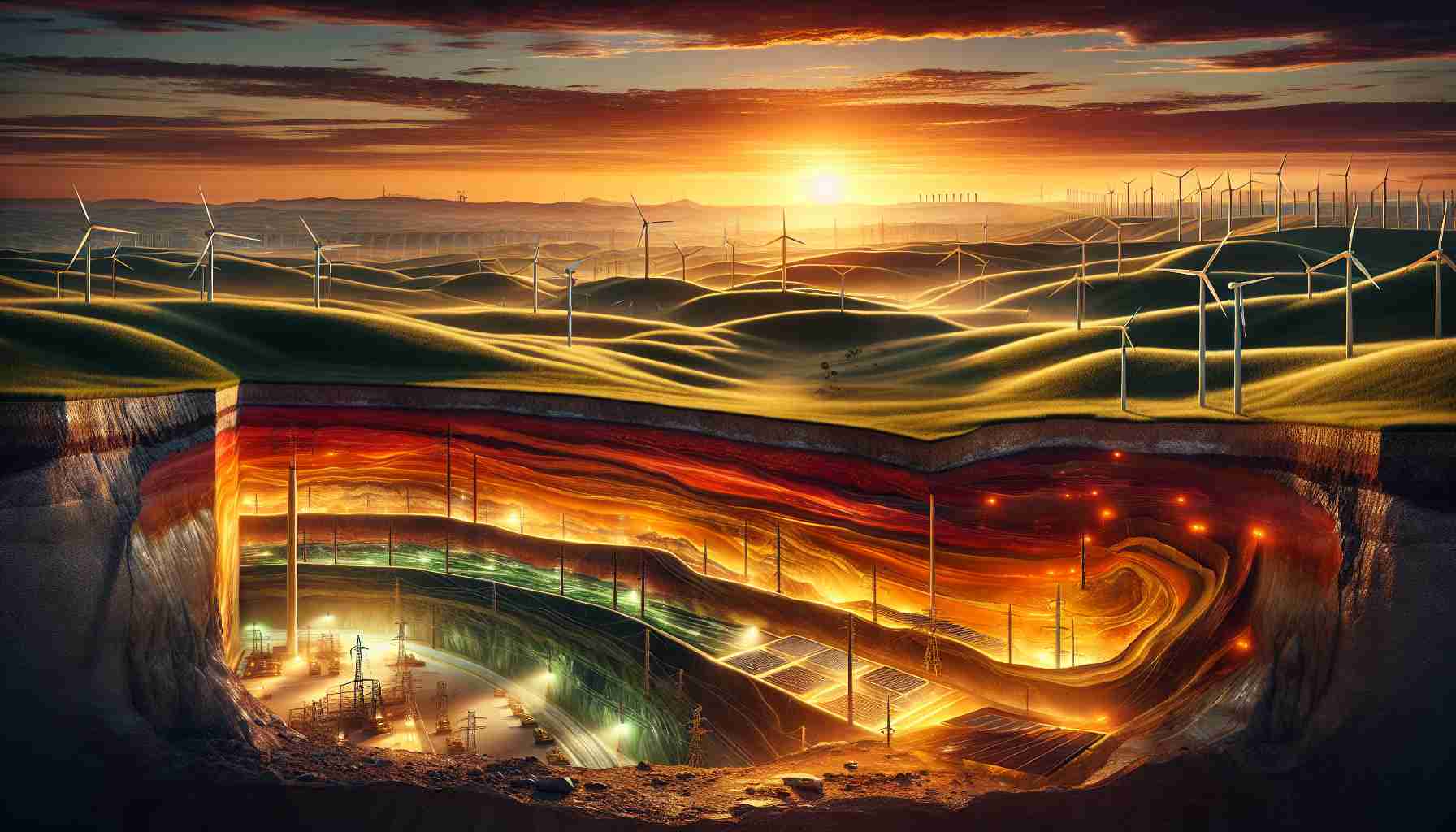Exploring the Vast Potential of Geologic Hydrogen
A groundbreaking map has emerged, revealing the potential locations of naturally occurring hydrogen resources within the contiguous United States. This discovery could spearhead a powerful shift towards a cleaner energy future. Researchers from the U.S. Geological Survey (USGS) have identified several promising areas for hydrogen exploration, including regions in Kansas, Iowa, Minnesota, and even along the California coast and the Eastern seaboard.
As nations work towards decarbonization, geologic hydrogen is gaining recognition as a clean energy alternative. Unlike fossil fuels, which are associated with carbon emissions, geologic hydrogen is a carbon-free resource. It possesses the capability to significantly contribute to sectors that traditionally struggle to decarbonize, such as aviation.
For years, scientists underestimated the potential of naturally occurring hydrogen. However, recent advancements indicate that this resource might be more abundant than previously thought. Preliminary estimates suggest that the recoverable geologic hydrogen could surpass the world’s proven natural gas reserves.
The new USGS map offers a continental perspective, grading regions with a prospectivity value that indicates the likelihood of hydrogen deposits. Although the map highlights the potential, it does not specify exact hydrogen concentrations.
Despite the excitement surrounding these discoveries, challenges remain. Exploration difficulties, economic uncertainties, and regulatory hurdles must be navigated for geologic hydrogen to become a mainstream energy resource. As demand for clean hydrogen surges, addressing these issues will be critical for unleashing this untapped energy source.
Examining the Broader Significance of Geologic Hydrogen
The discovery of vast potential geologic hydrogen reserves in the United States presents profound implications for society and the global economy. As nations strive for sustainability, geologic hydrogen could reshape energy markets, reducing reliance on fossil fuels and facilitating the transition toward cleaner alternatives. For instance, if successfully extracted and utilized, this carbon-free resource could significantly advance sectors resistant to decarbonization, such as aviation and heavy industry, potentially decreasing global greenhouse gas emissions significantly by 2030.
Moreover, the socio-economic landscape can alter drastically. Regions identified as hydrogen-rich areas, including parts of Kansas and California, may experience economic revitalization through job creation in exploration, production, and supporting technologies. The associated investments in infrastructure and technology might also offer competitive edges in the emerging hydrogen economy, which is projected to grow substantially, with some estimates reaching a $200 billion market by 2030.
However, while the promise of geologic hydrogen is enticing, environmental effects must not be overlooked. Concerns regarding the ecological impact of exploration and extraction processes could arise, necessitating stringent regulatory frameworks to mitigate potential harm to local ecosystems.
In line with future trends, as research continues to illuminate more about this resource’s scalability, public perception and government policies will likely evolve. With robust public support and effective policy initiatives, geologic hydrogen could become a cornerstone of a sustainable energy paradigm, fundamentally transforming energy consumption patterns for generations to come.
The Future of Clean Energy: Unlocking the Potential of Geologic Hydrogen
Exploring the Vast Potential of Geologic Hydrogen
Recent advancements in geologic hydrogen research have illuminated a promising path toward a cleaner energy future. A pivotal map released by the U.S. Geological Survey (USGS) identifies potential locations for naturally occurring hydrogen resources across the contiguous United States. This groundbreaking discovery could significantly impact the shift away from fossil fuels and aid in the decarbonization of hard-to-electrify sectors such as aviation and heavy transportation.
# Key Features of Geologic Hydrogen
1. Carbon-Free Resource: Geologic hydrogen represents a renewable energy source that does not contribute to carbon emissions, distinguishing it from traditional fossil fuels. Its application could align with global efforts to mitigate climate change.
2. Abundance Potential: The newly revealed preliminary estimates suggest that the recoverable reserves of geologic hydrogen might exceed the world’s proven natural gas reserves, indicating a vastly untapped resource that could play a vital role in the future energy landscape.
3. Mapped Prospectivity: The USGS map grades various regions—including Kansas, Iowa, Minnesota, and segments along the California coast and Eastern seaboard—based on their prospectivity for hydrogen deposits. This approach allows for targeted exploration efforts while managing resources efficiently.
# Use Cases and Innovations
The potential applications of geologic hydrogen extend beyond just electricity generation. Its versatility allows for integration into several industries, including:
– Aviation: Hydrogen can serve as a clean fuel alternative for aircraft, reducing the sector’s reliance on kerosene and minimizing its carbon footprint.
– Heavy Industry: Industries such as steel manufacturing and chemical production can also benefit from hydrogen, offering a carbon-free solution to replace fossil fuels traditionally used in these sectors.
# Challenges and Limitations
While the prospects for geologic hydrogen are promising, several challenges must be addressed:
– Exploration Difficulties: Identifying and accessing deposits may require advanced technologies and substantial investment.
– Economic Viability: The economic landscape for hydrogen production, transportation, and infrastructure still presents uncertainties that must be quantified and mitigated.
– Regulatory Frameworks: Establishing comprehensive regulations that support the safe and environmentally responsible extraction and utilization of geologic hydrogen is essential.
# Trends and Market Insights
As global attention shifts toward sustainability, the demand for hydrogen—especially clean hydrogen sources—is expected to escalate. Recent market analyses predict that the clean hydrogen market could reach significant milestones by the end of this decade, driven by governmental policies and investments aimed at fostering the green economy.
# Sustainability and Future Outlook
With increasing interest from governments and private entities, the journey toward harnessing geologic hydrogen promises not only environmental benefits but also economic opportunities. The United States could position itself as a leader in this emerging market, capable of exporting hydrogen technology and resources internationally.
In summary, geologic hydrogen carries immense potential as a cornerstone of future clean energy initiatives. Addressing the various challenges will be crucial in unlocking this resource, enabling a sustainable energy transition that is both economically viable and environmentally sound.
For further information on the latest energy trends and innovations, visit USGS.


